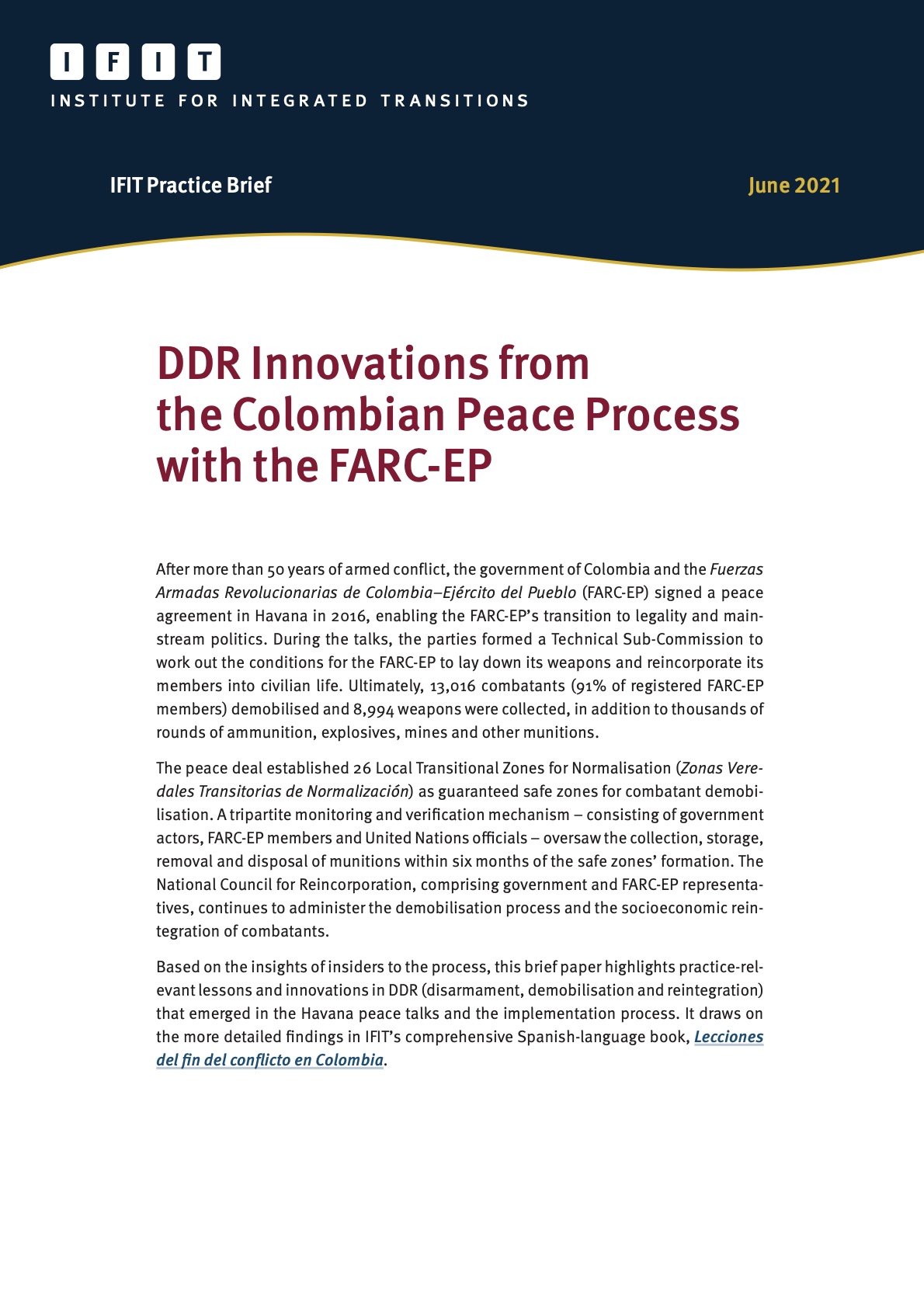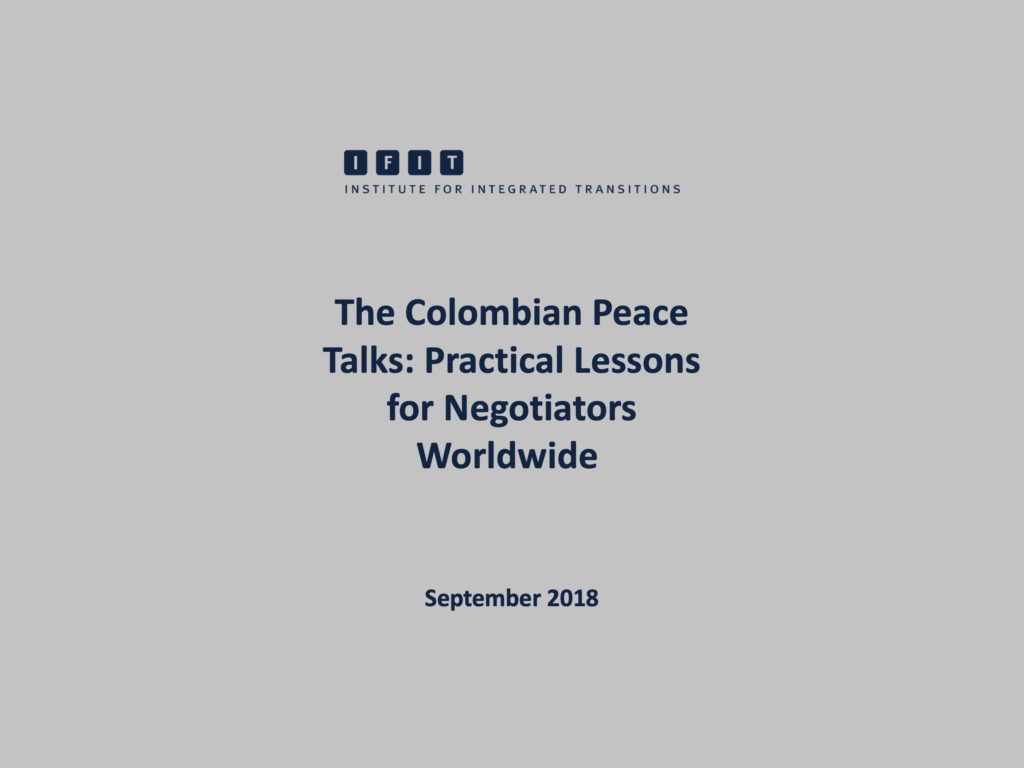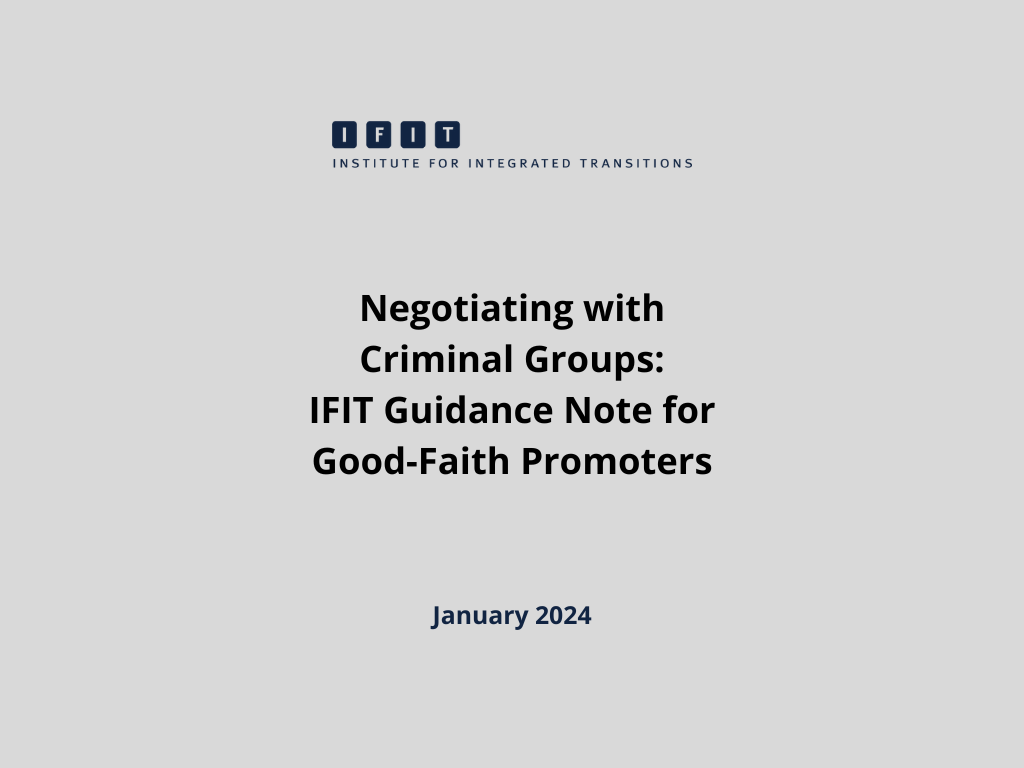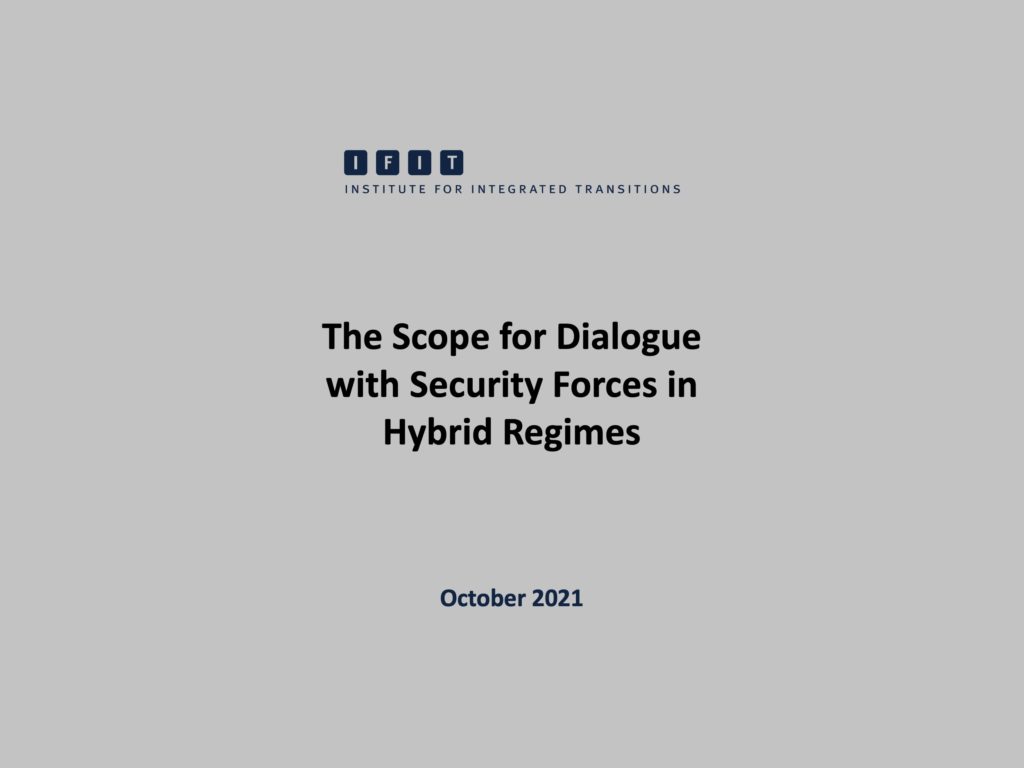Publication
/ Law and Peace
Aug 2020
DDR Innovations from the Colombian Peace Process with the FARC-EP
After more than 50 years of armed conflict, the government of Colombia and the Fuerzas Armadas Revolucionarias de Colombia–Ejército del Pueblo (FARC-EP) signed a peace agreement in Havana in 2016, enabling the FARC-EP’s transition to legality and mainstream politics. During the talks, the parties formed a Technical Sub-Commission to work out the conditions for the FARC-EP to lay down its weapons and reincorporate its members into civilian life. Ultimately, 13,016 combatants (91% of registered FARC-EP members) demobilised and 8,994 weapons were collected, in addition to thousands of rounds of ammunition, explosives, mines and other munitions.
Based on the insights of insiders to the process, this brief paper highlights practice-relevant lessons and innovations in DDR (disarmament, demobilisation and reintegration) that emerged in the Havana peace talks and during the implementation phase.
The DOI registration ID for this publication is: https://doi.org/10.5281/zenodo.10474344
You may also be interested in
After more than 50 years of armed conflict, the government of Colombia and the Fuerzas Armadas Revolucionarias de Colombia–Ejército del Pueblo (FARC-EP) signed a peace agreement in Havana in 2016, enabling the FARC-EP’s transition to legality and mainstream politics. During the talks, the parties formed a Technical Sub-Commission to work out the conditions for the FARC-EP to lay down its weapons and reincorporate its members into civilian life. Ultimately, 13,016 combatants (91% of registered FARC-EP members) demobilised and 8,994 weapons were collected, in addition to thousands of rounds of ammunition, explosives, mines and other munitions.
Based on the insights of insiders to the process, this brief paper highlights practice-relevant lessons and innovations in DDR (disarmament, demobilisation and reintegration) that emerged in the Havana peace talks and during the implementation phase.
The DOI registration ID for this publication is: https://doi.org/10.5281/zenodo.10474344









